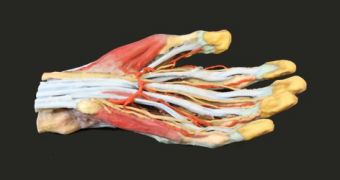It is a seldom advertised fact that most of our medical know-how in regards to human bodies comes from autopsies and live surgeries. Just as handwaved is how college undergraduates studying medicine gain experience (and lose their squeamishness) by assisting with autopsies and certain operations and analyses.
Now, though, 3D printing technology is helping reduce the frequency of studying human cadavers. Students won't need to look at (or inside) a cut-up dead body to get a feel of how the organs are arranged.
You see, researchers at Monash University’s Centre for Human Anatomy Education have created a 3D printed anatomy kit that will come in especially useful to those schools and colleges that don't have the cadavers needed for the practical studies.
The storage requirements for those cadavers aren't exactly low either, so some institutions may simply not have the funds needed for this common practice in teaching human anatomy and physiology.
It took centuries of using this common practice before this alternative was finally created, but here it is. Admittedly, 3D printed kits can't be used for everything, but they will be an excellent alternative considering the issues we mentioned above.
Besides, actual cadavers can only be used for a very brief period after taken out of storage. It doesn't help science that there are many taboos associated with the death of the human body. Everyone knows about these studies, and their necessity, but it's still a practice looked upon with disapproval by the world at large.
There are even countries where their usage is outlawed, or prevented due to social conventions. 3D printed kits should make it there just fine.
As you might have guessed, the 3D printed anatomy kits were developed using the same techniques employed by implant developers: CT scans and surface laser scans. Plastic and plaster-like powders were used for the materials.
The final prints aren't as “squishy” as human bodies (the skeleton notwithstanding), but they do have the head, neck, chest, abdomen and limbs accurately sized, spaced and colored. Same for the internals.
Normal schools should be able to acquire one or more of these kits fairly easily too, once they start shipping. We just have to wait for Monash University to market them, or for a third party to pick up the slack of manufacturing. 3D printed the kits may be, but there are only so many that a lone university's science division can made before demand overwhelms the institution (and distracts it from actually researching and inventing other things).

 14 DAY TRIAL //
14 DAY TRIAL //